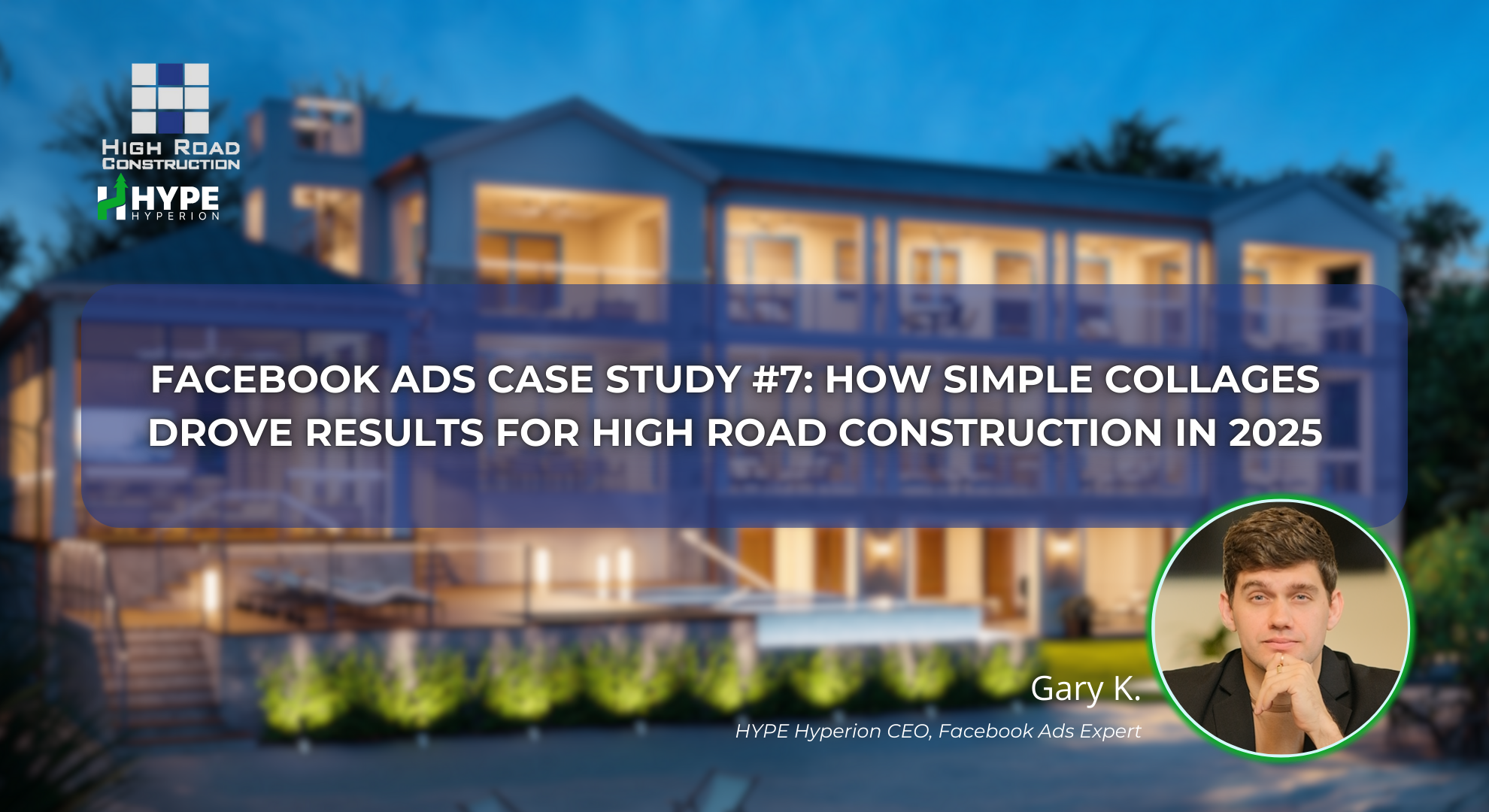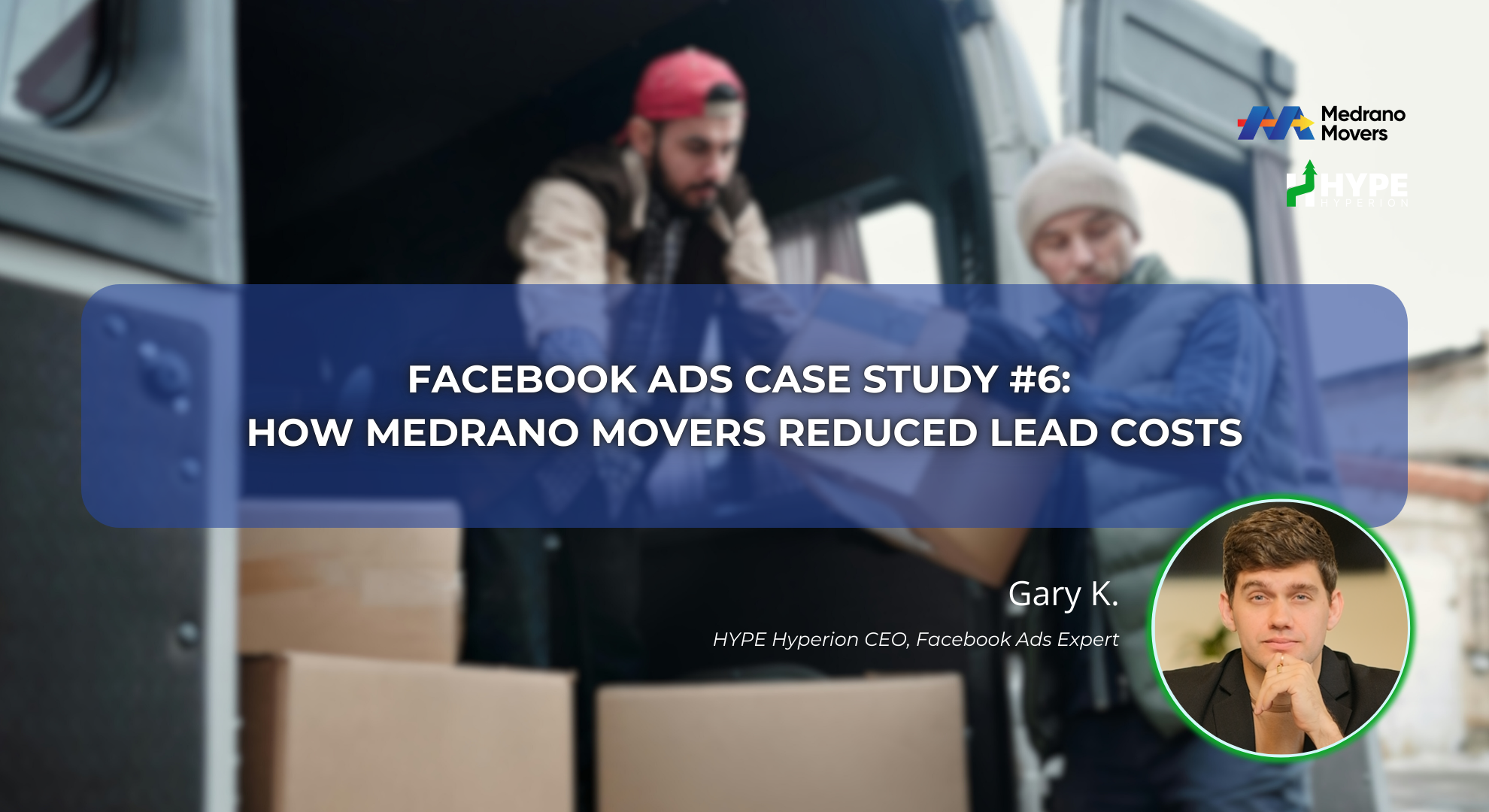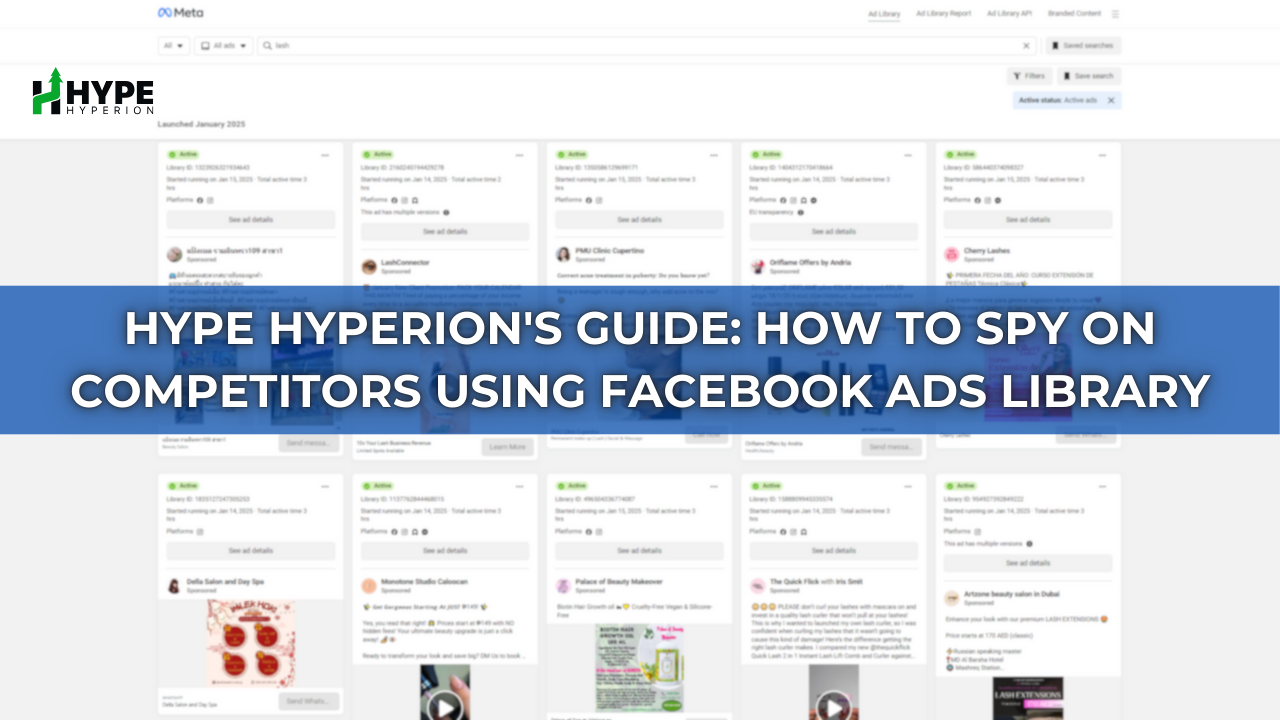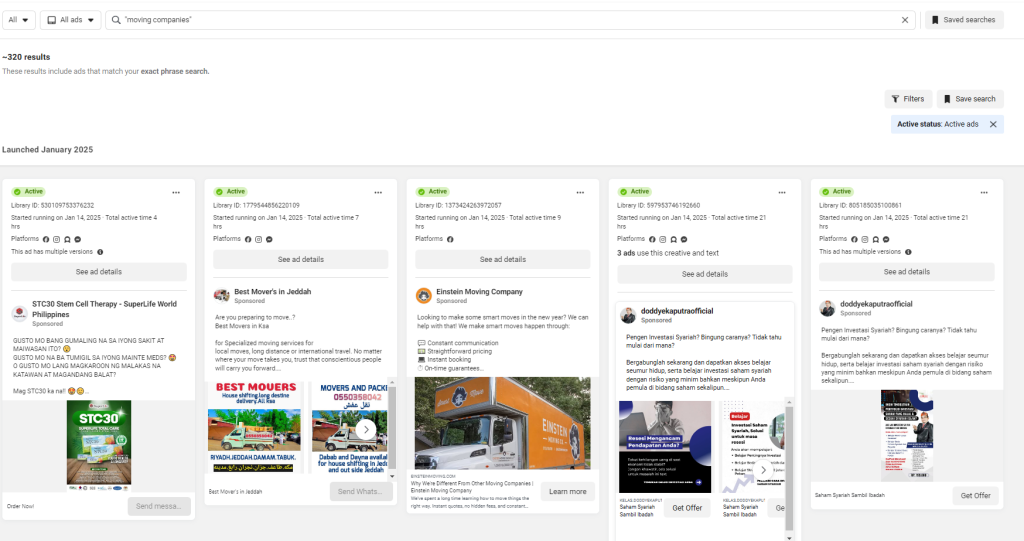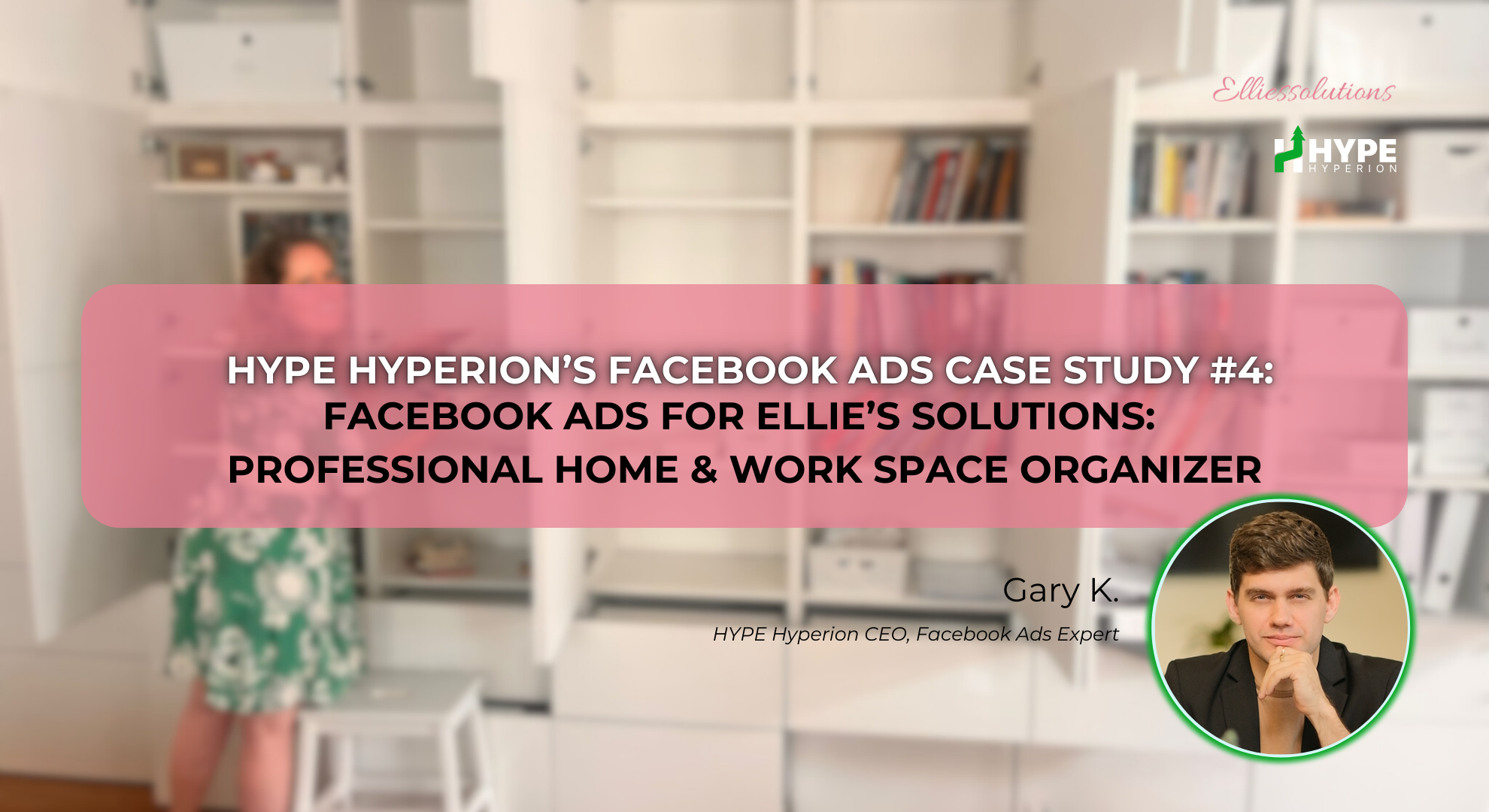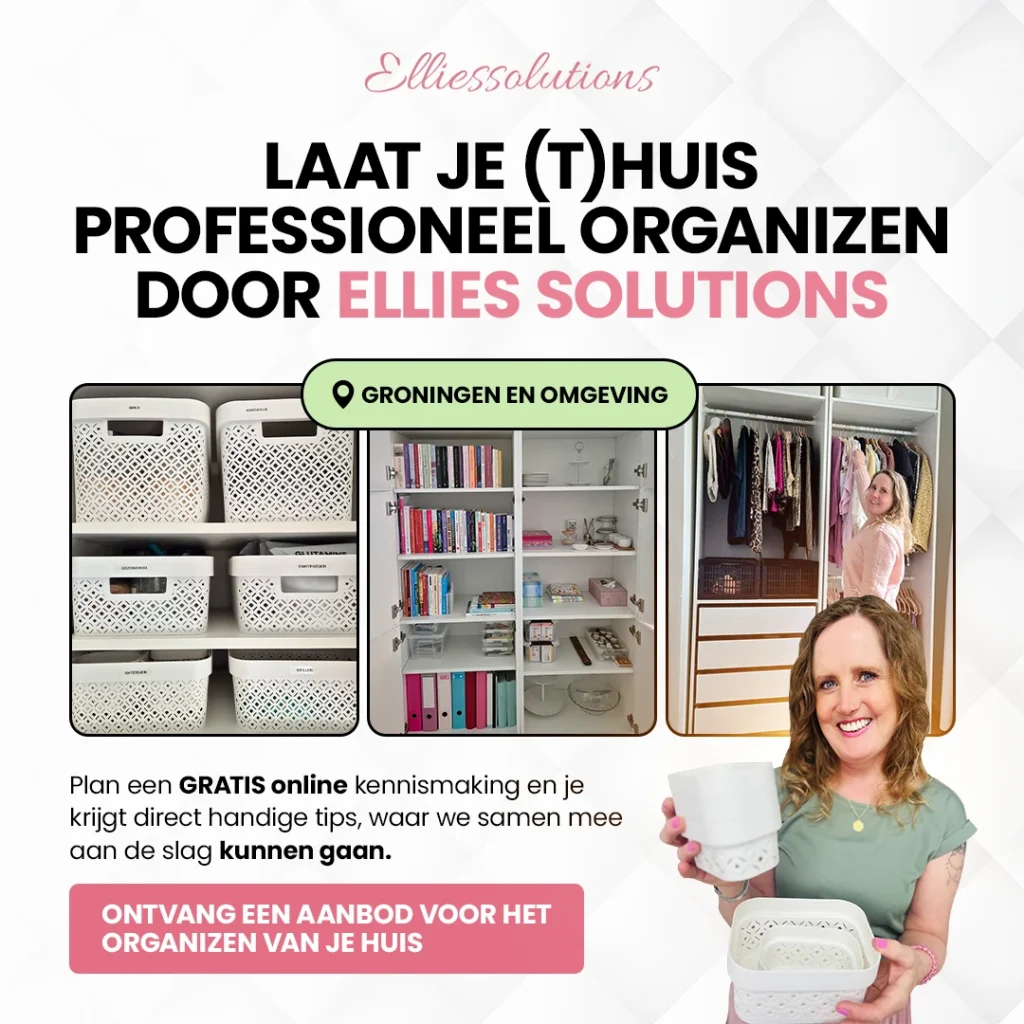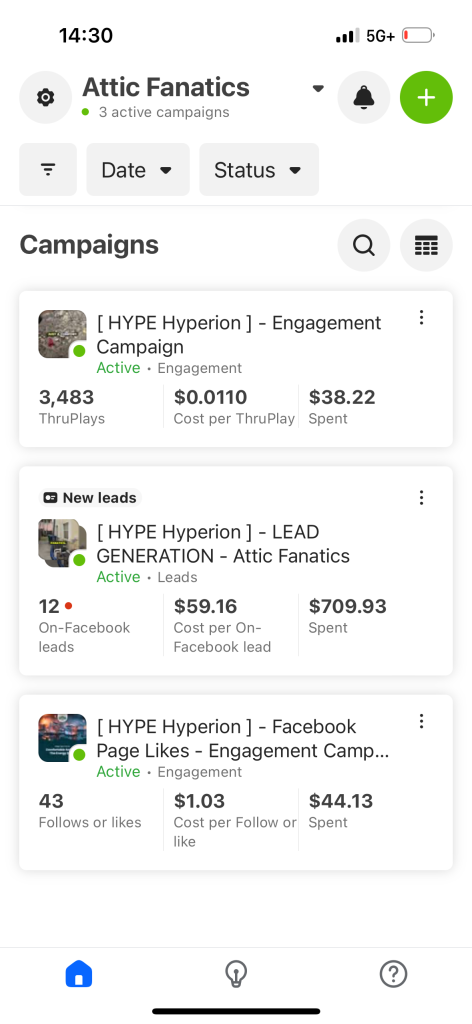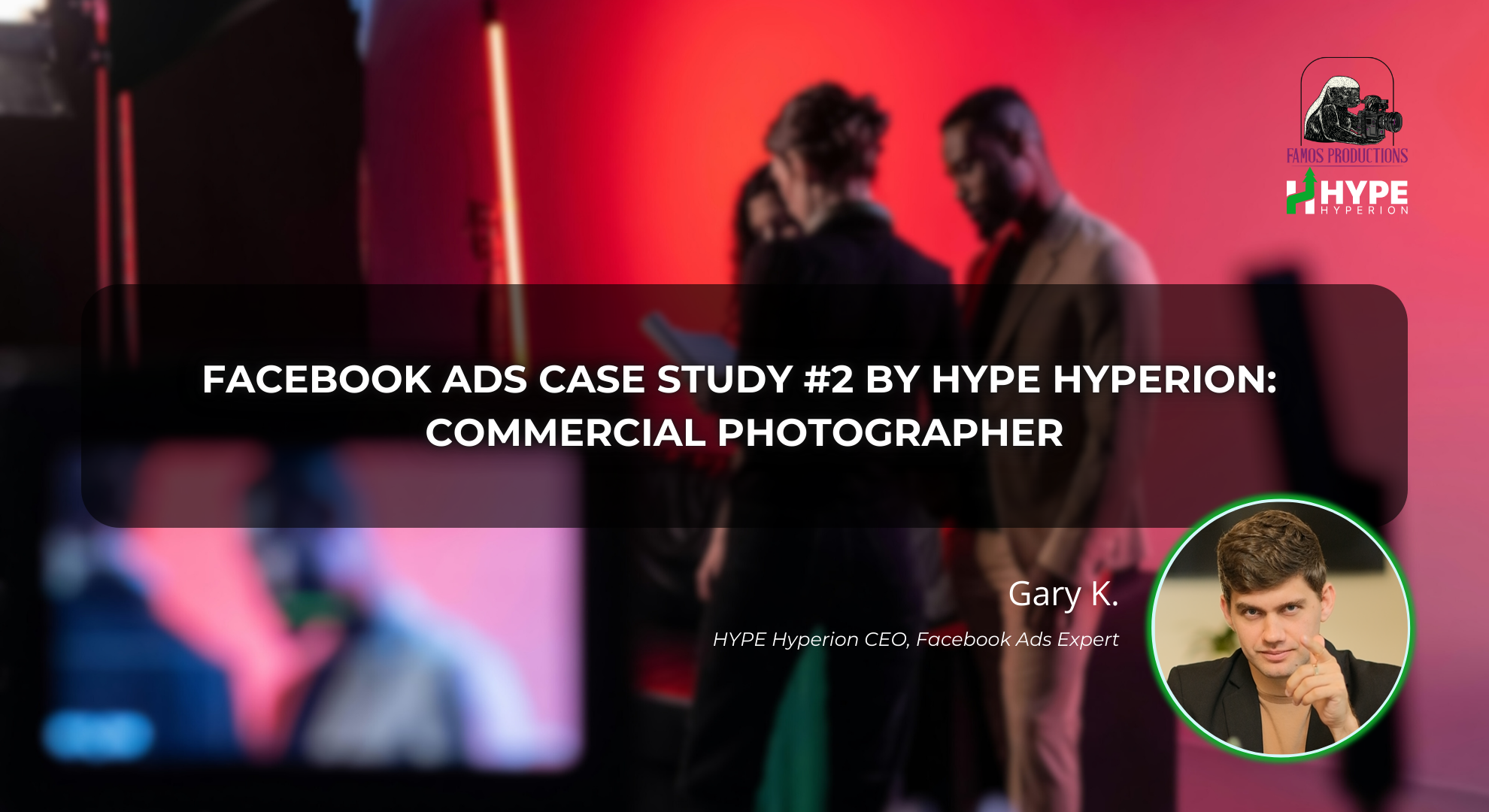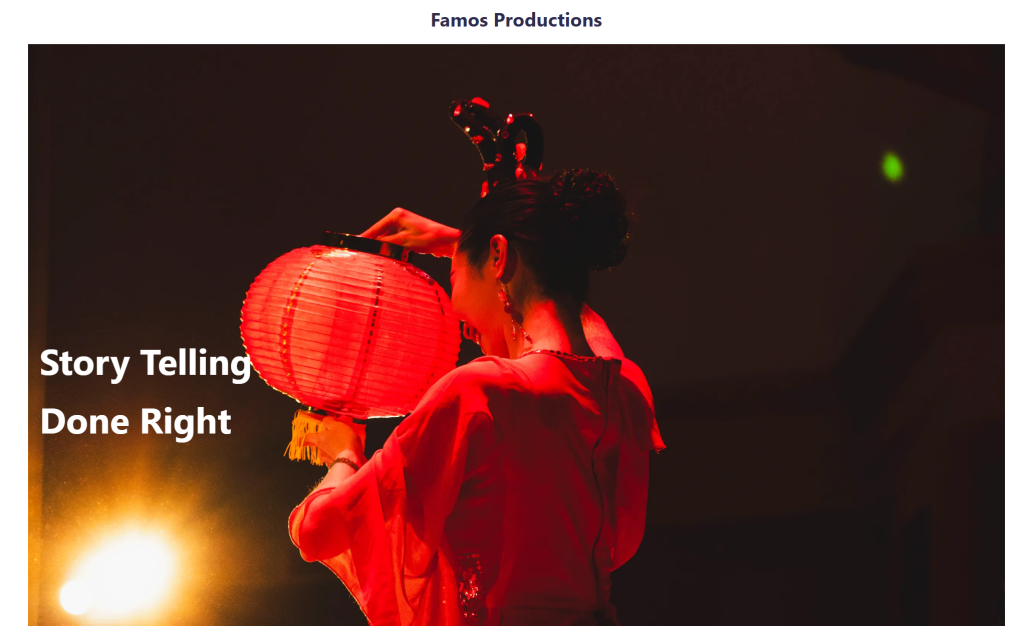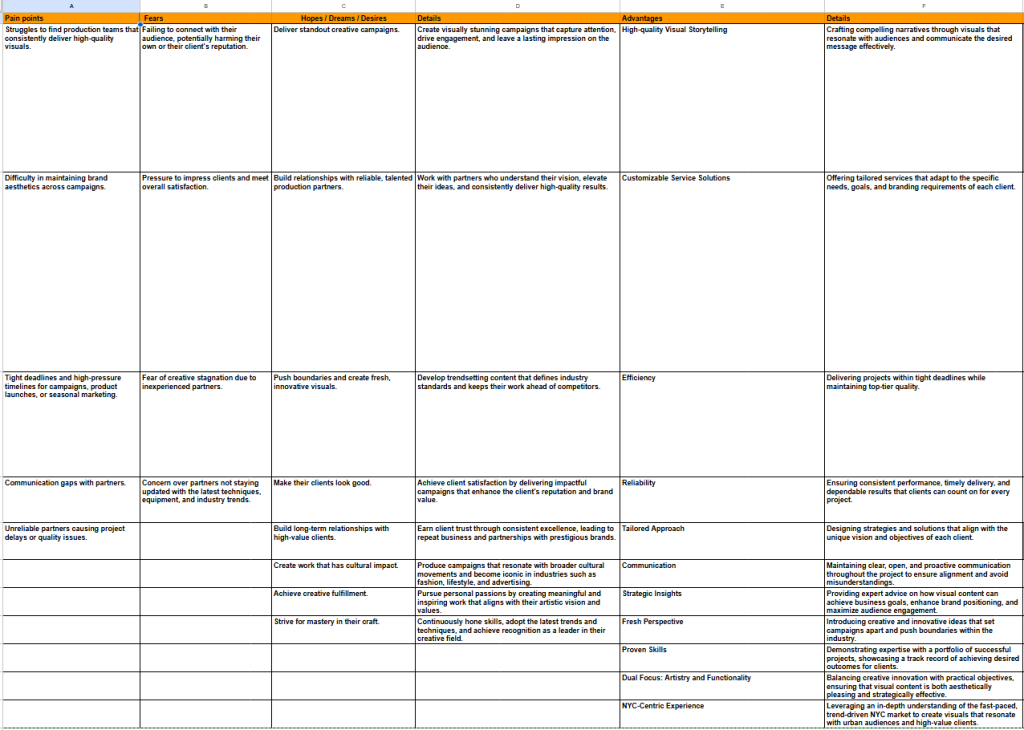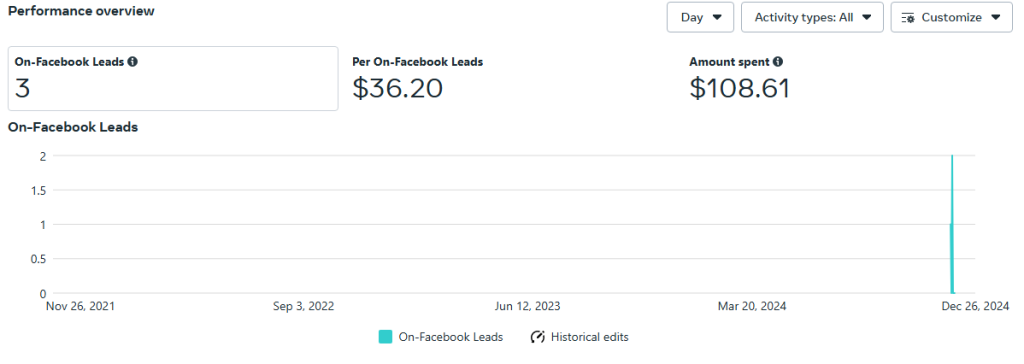High Road Construction, Inc. is a licensed and insured Certified General Contractor serving Miami-Dade and Monroe counties. With over 80 years of combined experience in residential construction, the company specializes in new home builds, additions, and major renovations. Their unique “High Road” approach emphasizes clear expectations, top-tier project management, and customer satisfaction.







How Simple Collages Outperformed Complex Concepts
A key takeaway from the Facebook ad campaign for High Road Construction was the effectiveness of simple visual solutions over intricate creative concepts. While complex designs aimed to capture attention with detailed storytelling, the audience responded more favorably to straightforward before-and-after collages. This preference highlights the practical expectations of construction service consumers, who seek clear, realistic representations of project outcomes.
The lesson learned: visual content in the construction industry should prioritize clarity and relatability to resonate with potential clients. By focusing on realistic solutions, brands can enhance engagement and build trust.
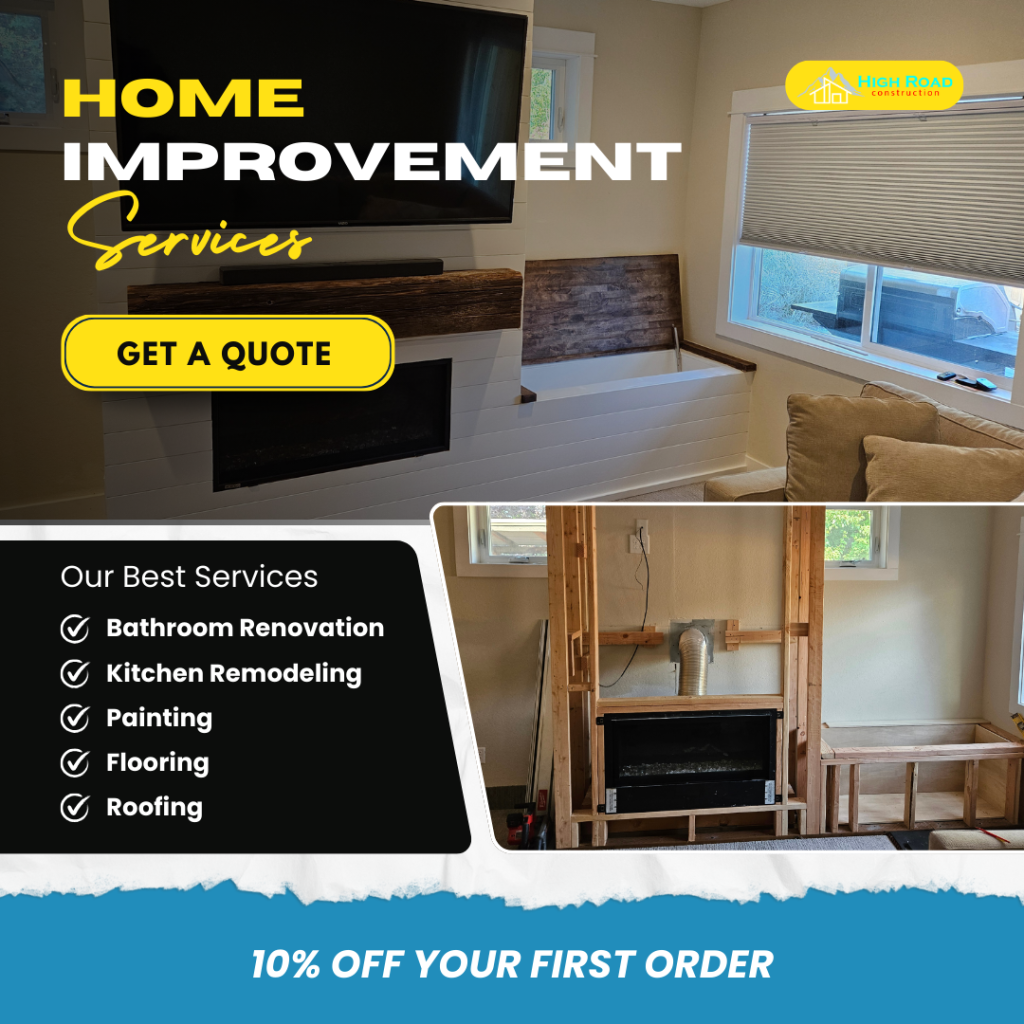


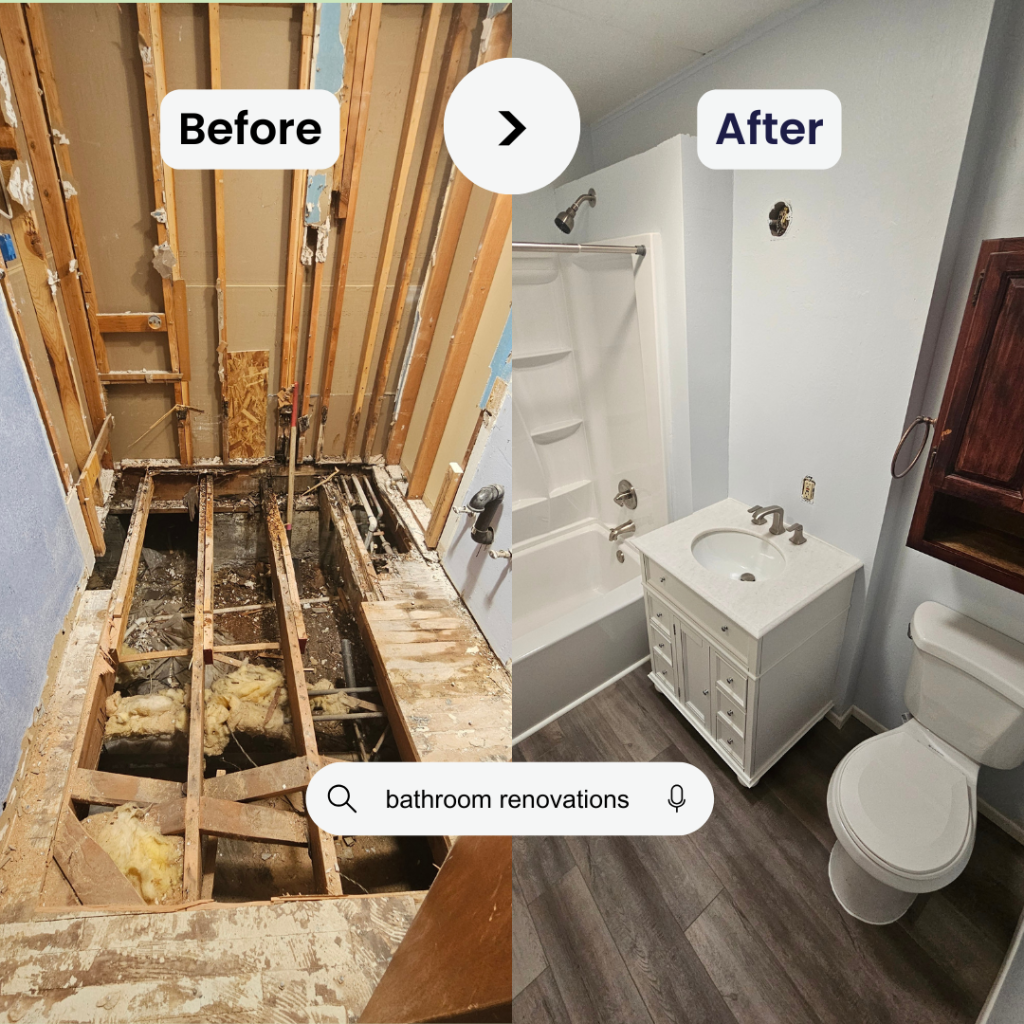
The Power of Video in Driving Engagement
Video content emerged as a highly effective format throughout the campaign. Its authenticity and dynamic nature provided prospective customers with a deeper understanding of the construction process and final results. High Road Construction leveraged short, genuine videos showcasing ongoing projects, client testimonials, and completed renovations.
The success of video content underlines the importance of creating honest and informative materials that give potential clients a realistic insight into the process. The combination of real footage and professional insights proved to be a winning formula.
Focusing on Customer Needs and Aspirations
Understanding the emotional connection that clients have with their living spaces was crucial in crafting the advertising strategy. Kitchens, in particular, are not just spaces for cooking; they represent areas of warmth, togetherness, and celebrations. High Road Construction’s messaging was tailored to emphasize how their services contribute to creating a comfortable and cherished environment.
This emotional approach allowed the campaign to appeal to the deeper values of clients, highlighting the importance of functional and aesthetic improvements that enhance everyday living.
The Role of Emotional Copywriting
Throughout the campaign, emotional storytelling played a pivotal role. Rather than focusing solely on technical aspects, ad copy was crafted to connect with the aspirations of potential clients. Messaging highlighted dreams of a cozy, functional, and aesthetically pleasing home, reinforcing the notion that High Road Construction can turn those dreams into reality.
Key takeaway: effective copywriting should center around the emotions tied to home improvements, emphasizing the joy and comfort that come with well-executed renovations.

Campaign Performance Overview
The Facebook Advertising campaign for High Road Construction achieved remarkable results in a relatively short period. With a total ad spend of $351.09, the campaign generated 7 high-quality leads at a cost of $50.16 per lead. The campaign reached 7,199 users and garnered 13,720 impressions, resulting in a click-through rate (CTR) of 0.87%.
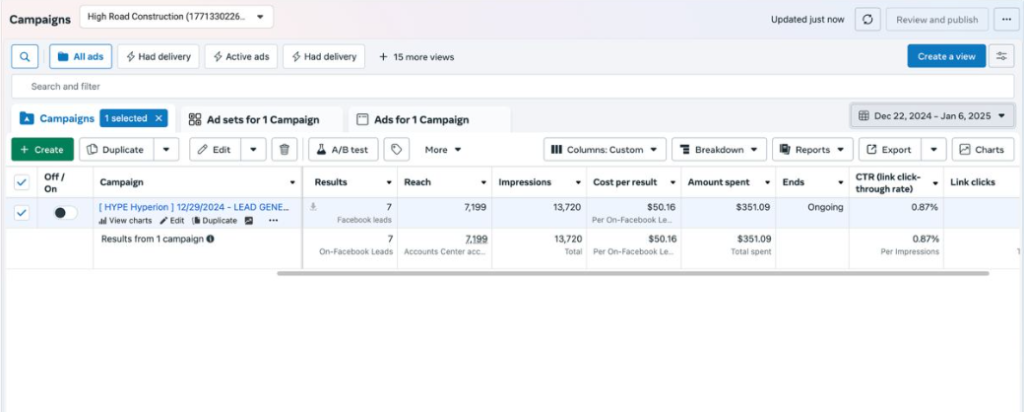
These results indicate that the campaign was well-optimized for engagement and lead generation. Considering the average project value for High Road Construction ranges between $50,000 and $60,000, the campaign’s return on investment was substantial.
Lessons Learned and Future Strategies
Based on the campaign results, several valuable insights can be applied to future advertising efforts:
- Simplicity Wins: Straightforward visual content such as before-and-after collages resonate well with the audience, making them more likely to engage and convert.
- Video is Essential: Short, informative videos showcasing real projects can significantly boost engagement and trust.
- Emotionally Driven Copy Works: Ads that tap into the emotions and aspirations of potential clients yield better responses.
- Client-Centric Messaging Matters: Understanding and addressing customer pain points and desires enhances the effectiveness of advertising campaigns.
The Ongoing Success and Future Collaborations
With the success of the initial campaign, High Road Construction expressed satisfaction with the results and has decided to extend their partnership with Hype Hyperion into 2025. This continued collaboration aims to refine strategies, experiment with new content formats, and further optimize advertising efforts.
The key takeaway from this case study is that a well-planned, customer-focused advertising approach can deliver significant returns, even with a modest budget. By continuously adapting and refining their strategy, High Road Construction and Hype Hyperion are poised for even greater success in the future.
